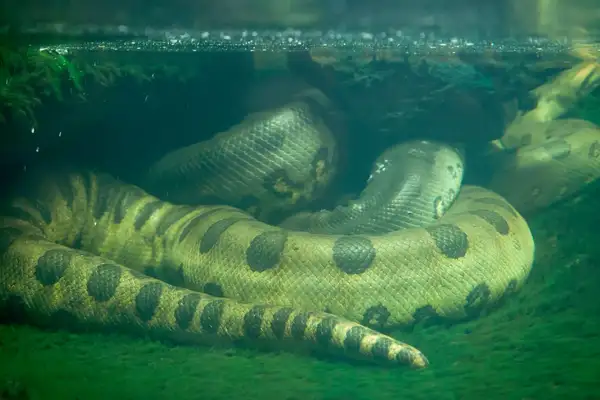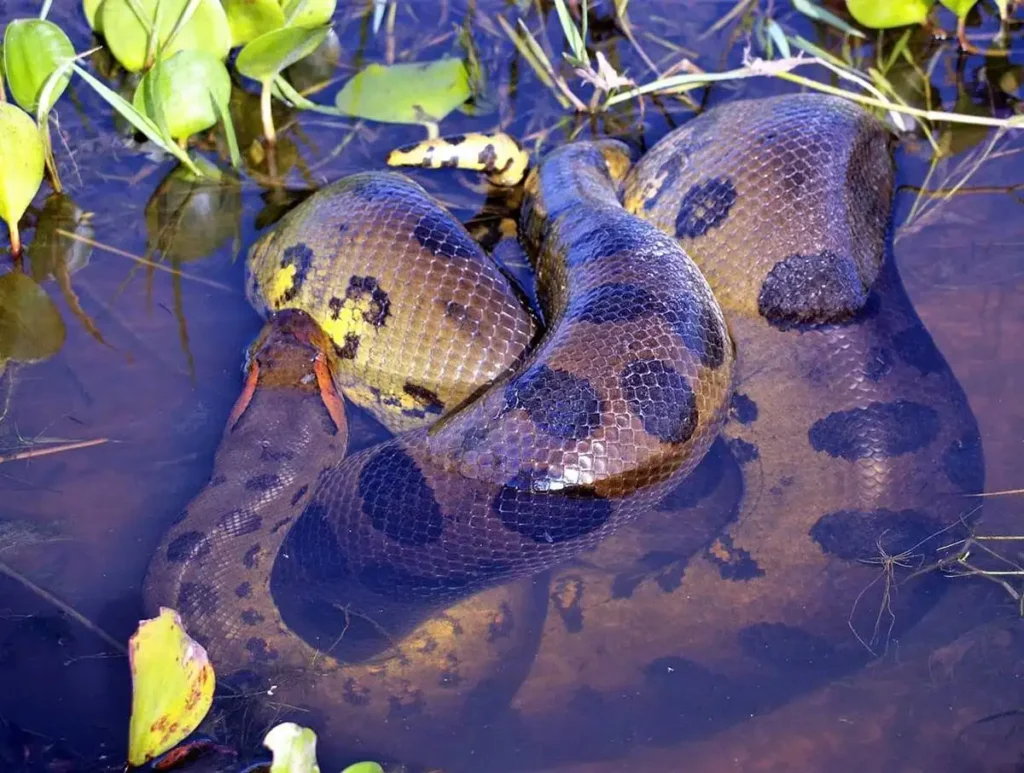Recent genetic research challenges the conventional understanding of the green anaconda, revealing it to comprise not one but two genetically distinct species.
Green anacondas
- Green anacondas (Eunectes murinus) are large, non-venomous constrictor snakes (Boa Species).
- They are found in the tropical parts of South America such as the basins of the Amazon, Orinoco, and Esequibo rivers.
- Renowned for their lightning speed, anacondas asphyxiate and swallow prey whole, including capybaras, caimans, and deer.
- As apex predators, they play a vital role in maintaining ecosystem balance, influencing the behavior of other species.
- Habitat: They are native to the tropical rainforests, marshes, and swamps of South America, including countries like Venezuela, Colombia, Brazil, and parts of the Amazon Basin.
- They are often found in slow-moving rivers, streams, and lakes.
- Size: Green anacondas are considered the heaviest and among the longest snakes in the world.
- Adult females are generally larger than males and can reach lengths of over 20 feet (6 meters) and weigh more than 200 pounds (90 kilograms).
- Reproduction: These snakes are ovoviviparous, meaning that they give birth to live young instead of laying eggs.
- A female anaconda can give birth to a large number of baby snakes, known as neonates, which are already capable of fending for themselves.
- Conservation status: Least Concern (IUCN) and CITES Appendix II.
Key Findings:
Genetic Discovery:
- Green anacondas, known for their size and predatory prowess, were believed to be a single species.
- Research spanning almost two decades reveals significant genetic differences, classifying them into two distinct species.
- The previously recognized species, Eunectes murinus, is termed the “southern green anaconda,” found in Perú, Bolivia, French Guiana, and Brazil.
- A newly identified species, Eunectes akayima, is labeled the “northern green anaconda,” residing in Ecuador, Colombia, Venezuela, Trinidad, Guyana, Suriname, and French Guiana.
- The genetic divergence of 5.5% between the two species, dating back almost 10 million years, challenges the previous notion of a single entity.
Conservation Implications:
- Green anacondas are highly sensitive to environmental changes, making them indicators of ecosystem health.
- The discovery of two distinct species prompts a reassessment of conservation strategies to address unique threats such as climate change, habitat degradation, and pollution.
- Tailored conservation plans are essential for each species, considering their potential different ecological niches, ranges, and vulnerabilities.
Preserving Biodiversity:
- The findings underscore the need for incorporating genetic taxonomy into conservation planning.
- Recognizing different species within a seemingly uniform population is crucial to prevent species from slipping through conservation gaps.
- Conservation initiatives should address legal protections, habitat preservation, and mitigation measures against climate change, deforestation, and pollution.
Ref: Source
| UPSC IAS Preparation Resources | |
| Current Affairs Analysis | Topperspedia |
| GS Shots | Simply Explained |
| Daily Flash Cards | Daily Quiz |



